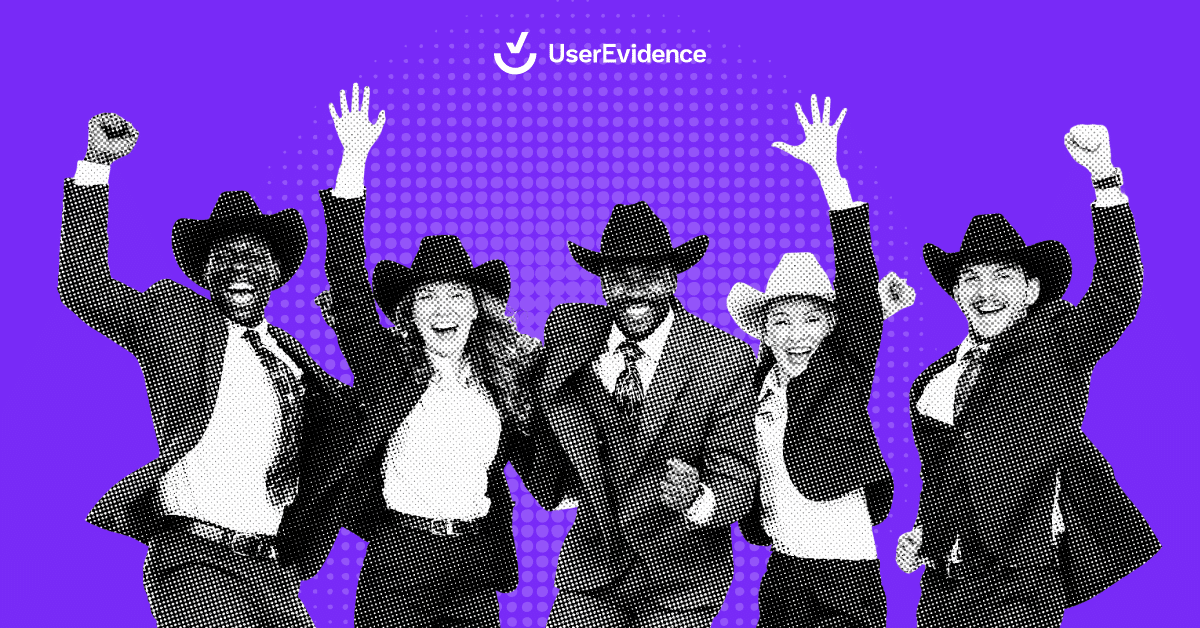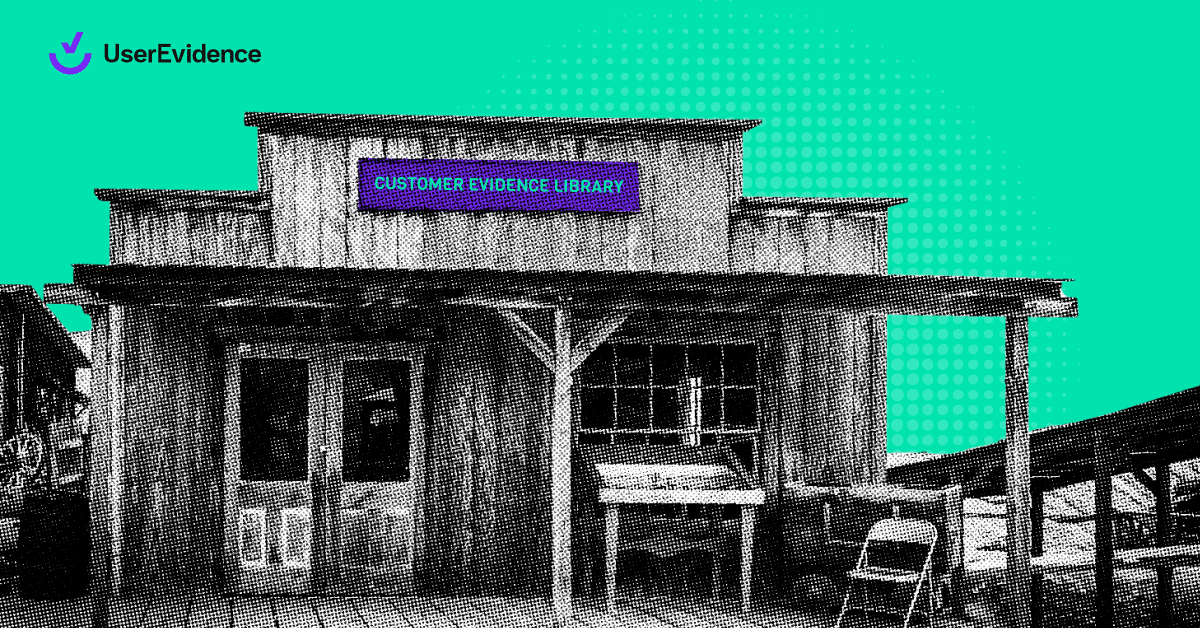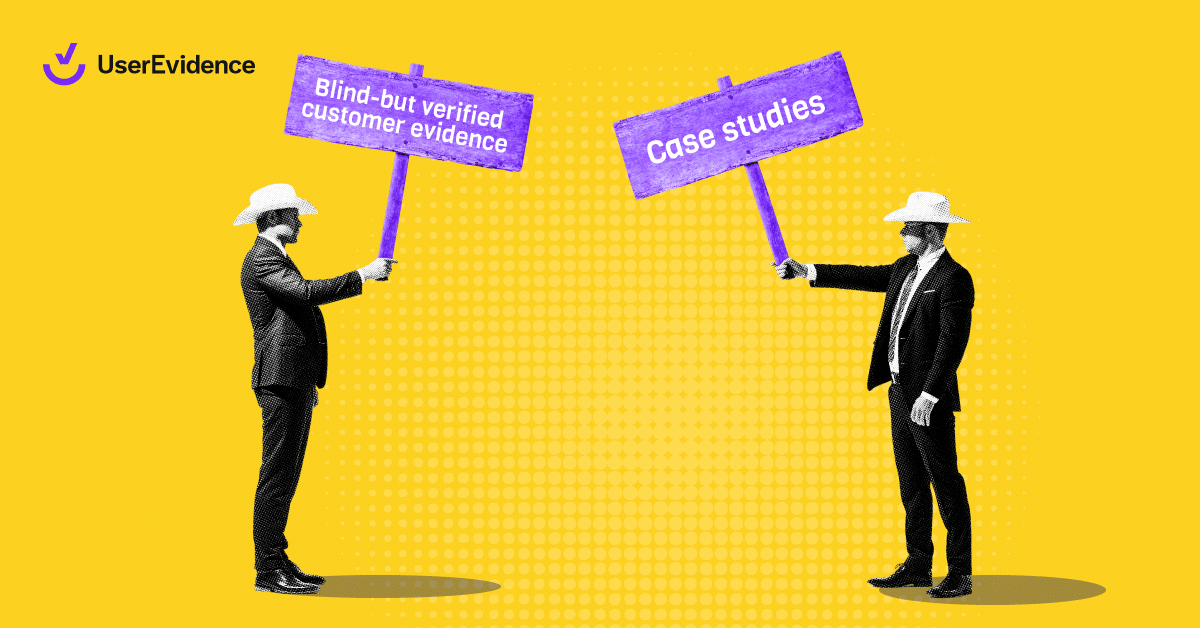TL;DR:
Product launches have always been a last-minute scramble. Now that I’m on a team that’s prioritized collecting, curating, and sharing customer evidence constantly? My narratives are stronger. My processes are less of a scramble. And the results are way clearer.
In this article, I’m sharing:
- How customer evidence has fundamentally changed how I approach product launches
- Examples of pieces of evidence that have been game-changing in recent product launches
- Real face-palm moments as I’ve struggled to embrace the evidence in my launch process (and how I’ve shifted my process to make my life easier)
- How UserEvidence (our platform) has made scaling these efforts a million times easier (and saved me from the last-minute launch scramble)
If you’re a product marketer, you already know what launch season feels like:
- You’ve worked to get Product to promise features on a timeline, but it’s currently “at risk”.
- Your narrative for launch is feeling light. Is it compelling enough?
- You are sinking too much time into trying to get quotes and proof from customers to drive said narrative home.
Cue the frantic Slack messages and emails. Cue the launch date changes. Cue maybe finding a dusty quote from 2021 that kind of applies if you squint hard enough.
Been there. Until I joined UserEvidence.
Narratives without a payoff
I don’t think it’s shocking to say every story, every launch narrative, is stronger with customers at the heart of it. Right? They’re our best sellers, and peers want to hear from other peers.
Our Evidence Gap report found that 90% of marketers and sellers admit they’re not providing the customer evidence buyers really want. And I get why having been in that 90%. It’s a slog. The problem with product launches specifically is every one feels like you’re starting from scratch. When you’re just grateful to have a quote at all, even if it’s not the right one, you’re playing a losing game.
Every time you want to add credibility—whether for a blog post, a deck, or a one-pager—you restart the process of chasing testimonials, begging Product for intros to beta customers, or pinging Customer Success for help. You know your product is delivering value, you just need the receipts.
This is the hamster wheel I’d been on for years, and the consequences were bigger than just a single launch. Customer evidence isn’t just a great testimonial for your launch blog. Your customers’ feedback can dictate:
- Launch messaging (because the best is found, right?)
- Sales’ new talk track and the way they respond to objections or challenges
- Success stats that drive conversion
In short, customer evidence can–and should–feed more than just your launch blog.
Here’s how I nail product launches with a customer evidence library
My product launches at UserEvidence are different.
With UserEvidence (our product) in place, instead of scrambling to source customer stories, I simply opened our asset library. Within minutes, I found feature-specific quotes, ROI stats, and customer sentiments we’d already collected—many from surveys other teammates had run themselves for other projects. There are a few key tenets that make this valuable for launches I want to walk through:
- Thematic messaging and proof
- Collecting net new evidence
- Evidence collection by teammates
Thematic messaging and proof
Two messaging truths:
- Product marketers are trying not to sell just on features.
- Our overall product and company narrative doesn’t shift with each launch.
New features support our overall company story and message to the market. I’m always collecting evidence to support these themes as a part of my regular customer evidence work, meaning the evidence for those themes is existing in our current asset library.
This is the exponential value of a customer evidence library over time. Even for a smaller company like us, we have over 200 assets to pull from in our library. This includes testimonials, stats, even customer research on work trends.
In my launches it’s important to tie the new features into our existing narrative, avoiding simple quotes filling up my launch materials about how “x feature is great,” and my existing library lets me do that in minutes.
A recent example of this? Our latest Share feature launch. It focused on deploying customer evidence to get it used across your GTM motion. Sales is a key end user of evidence. So to support the opening narrative of the launch I was able to find a testimonial fitting our message from a sales persona, export a branded asset, and put it in the launch day blog post in about five minutes.
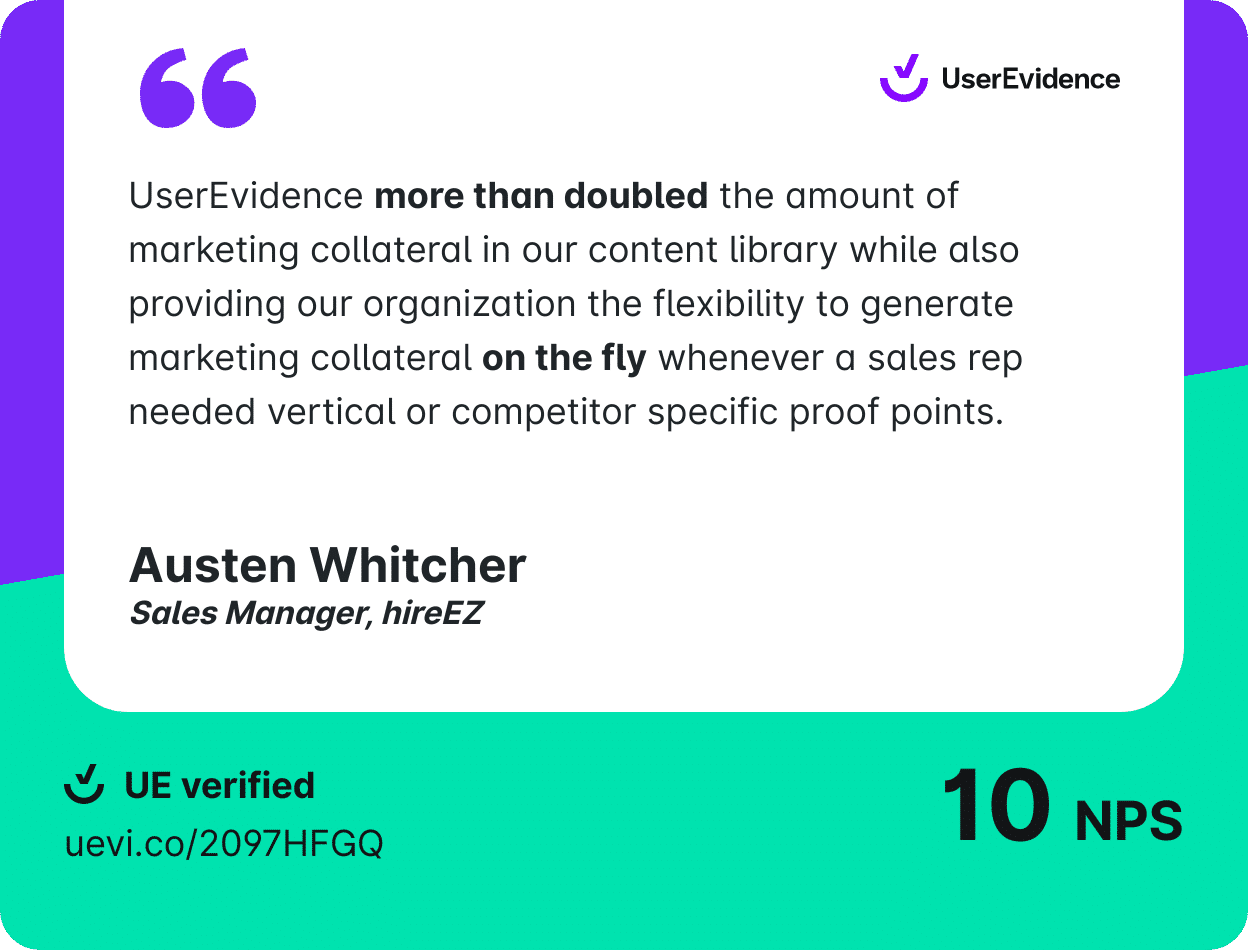
For our Collect feature launch, I wanted something to add credibility to a problem I know people come to us to solve—collecting enough customer evidence. From our recent census survey I had a chart ready to go from 39 of our customers sharing their biggest challenges. 77% of new customers had gaps in their library of stories.
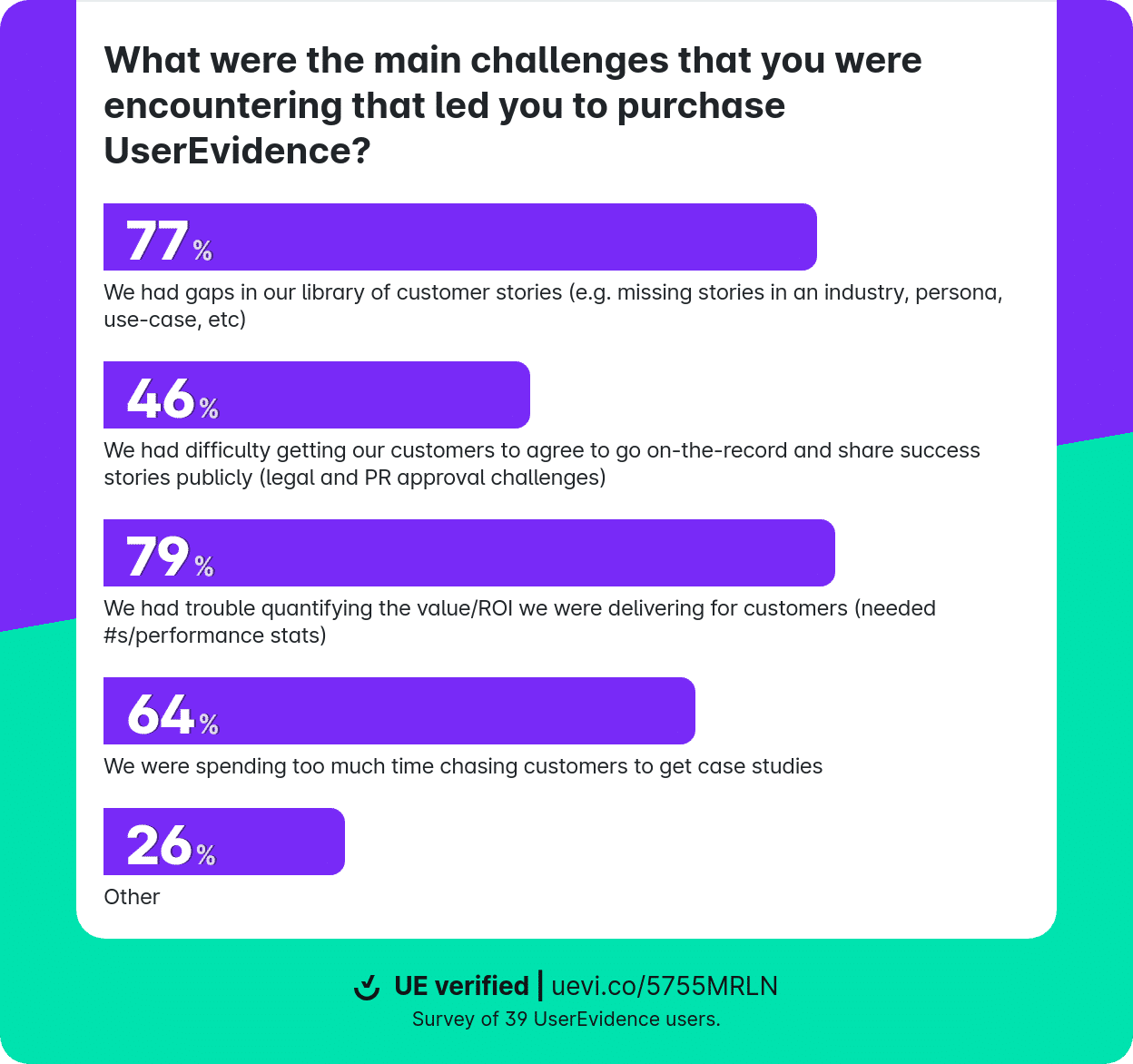
Again, when you’ve got a library of customer evidence at the ready, the process looks like: idea, search, export, done in around 5 minutes.
Takeaway: Use customer evidence to tell your whole story, not just a specific feature story. This approach means stronger stories, and more value in your library of customer evidence since you have relevant proof points building up over time you can use in different launches.
Collecting net new evidence
You’re probably thinking: “that’s great and all, but this doesn’t solve the need for new evidence for the new features I’m launching.”
And you’d be right.
At the end of the day there is typically still some new evidence collection required. UserEvidence has still made my life 47x easier in this process in two main ways: the ask and the asset creation.
The ask. The best collection method is still surveys. Why? Low impact, low commitment, nimble. For launches I create small 1-3 question surveys that can be done in 30 seconds. These are easier for everyone. I’m not asking for a call or even 20 minutes of a customer’s time. Lowering the stakes like this makes it so much easier to get responses and makes my team more willing to make the ask on my behalf. I distribute surveys via direct email, via my CS team in their shared Slack channels (best method, IMO), and via our product manager to beta users.
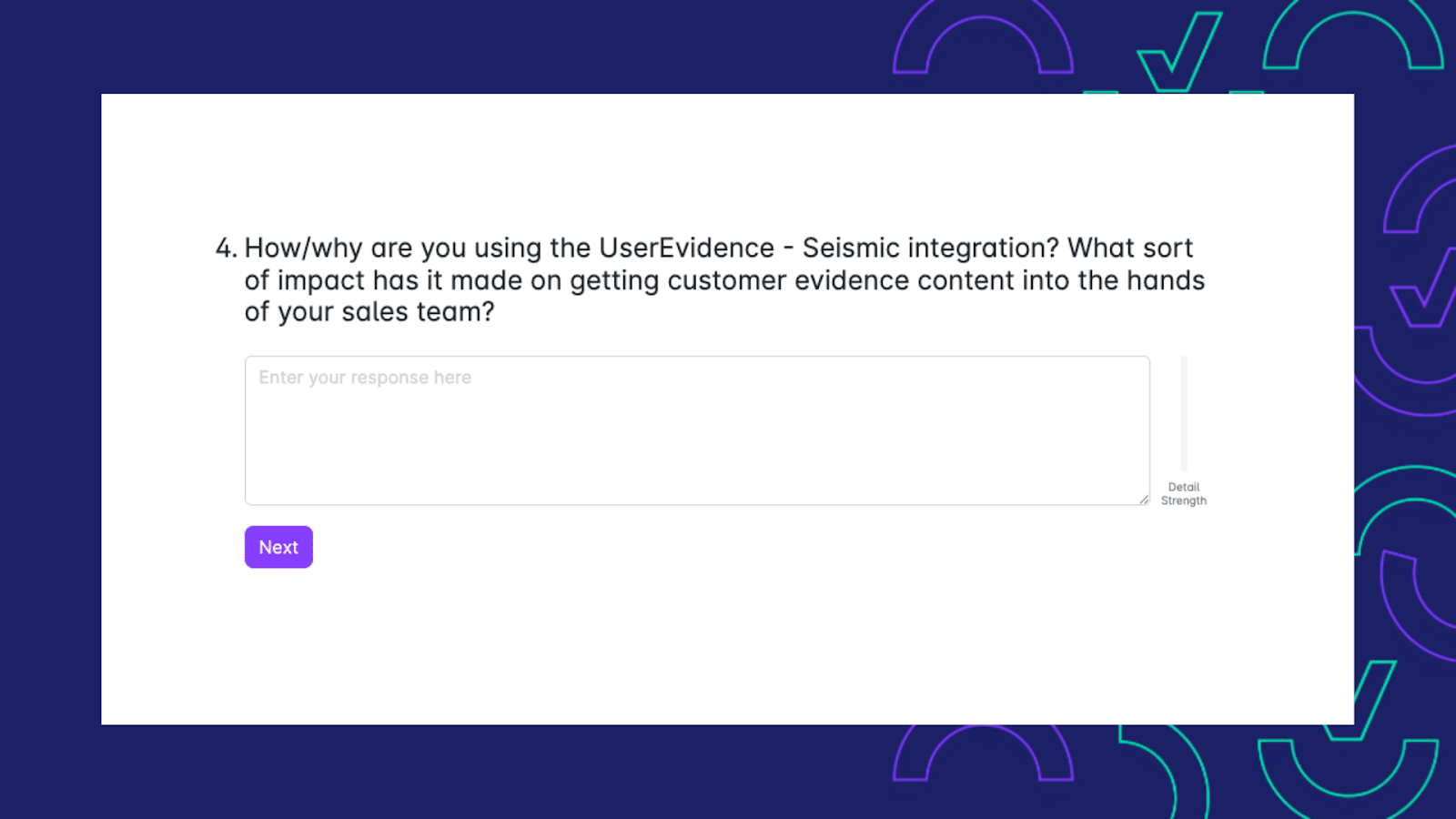
Asset creation. Once you have a survey response you still have to tackle approvals, branding, and making it all usable. UserEvidence takes care of all of this (also why UserEvidence surveys are specifically my go-to). When a customer fills out our survey they can choose to be named or anonymous, even volunteer for more advocacy activities if they want. Since UserEvidence is a third-party research partner, anonymous testimonials and stats are viable since we verify them. Branded templates means once we have the response I can add it to our library and export a usable asset immediately, no sending off to design or extra steps of customer approval. It’s all built in.
An example of this in practice, again from our Share feature launch.
We launched a feature that enables customers to create branded slides as an exportable asset for testimonials. We shared this feature in-progress with our customer advisory board, and I noticed one of our customers, Jarod, the CMO at Vivun, was particularly stoked.
After the call I hit him up on our shared Slack asking if we could turn his stoke into a quote for the launch. He agreed, and with a quick survey plus using our new slides feature I had a deck slide ready to rock.

Notice how this design is intentionally different from the quote assets I shared earlier–we have multiple, brand-approved templates available for our team to pull from based on different use cases and asset types. Keeps things fresh (and on brand, much to our marketing team’s relief).
I was able to pull this off because I was able to quickly react to a moment I noticed (CS and Product can do the same), follow up quickly while it was top of mind, and make it fast and painless for Jarod. Done.
Democratizing evidence collection
One of my biggest launch wins has been feature-specific evidence…that I didn’t even have to collect. This is the next step to greatness—when your team starts collecting feedback in UserEvidence compounding on an already valuable and growing customer evidence library.
Admittedly, this was also a part of my re-learning process as a product marketer. For my first 6 months I just wasn’t used to having this library available. I had to build the muscle of looking there first. Our CEO Evan, helped get me there (even if it was slightly embarrassing at the time).
Two specific examples where this happened: Both related to integrations, which I think are great examples of times when evidence doesn’t need to be collected by the product marketer.
In two different launches we launched our integrations with Seismic and G2. Two companies we partner with, a process I’m not fully in the loop on day-to-day.
For the launch, I posted in our customer success Slack channel asking which customers used our Seismic integration and who I could send a quick survey to. Enter our CEO, Evan.
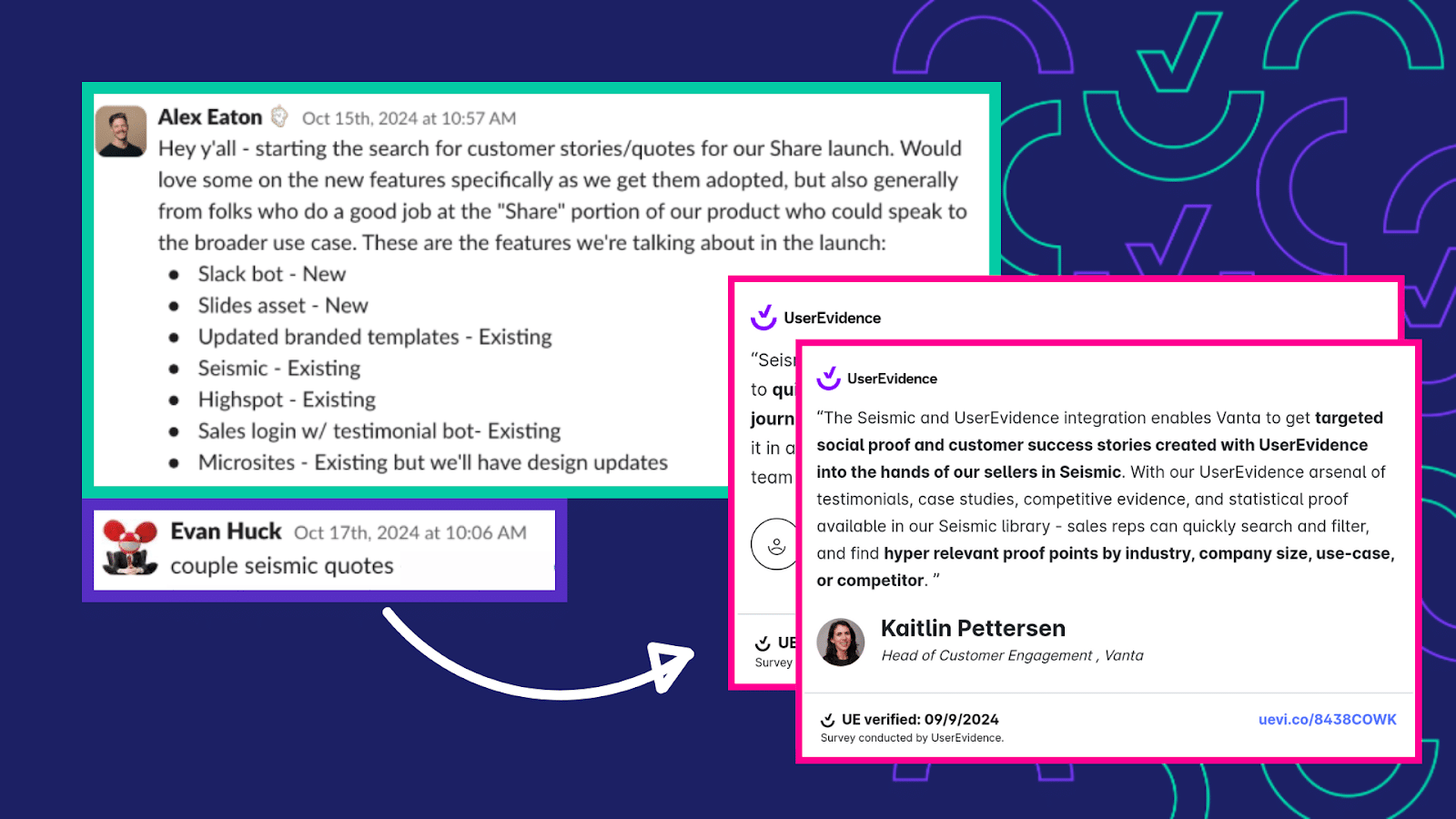
Welp. Bit of a facepalm moment for me, but he linked to two incredible testimonials about our Seismic integration our team had already gathered. Both were ready to go in our library.
By the time our next launch rolled around, I had learned my lesson. We were launching our G2 integration, and I went to our asset library immediately. A simple search you can see below led me to 20+ assets related to our integration, and as I scrolled down even verified ROI stats and a microsite collecting some of our best feedback all together. All ready to go, all gathered by our team previously.
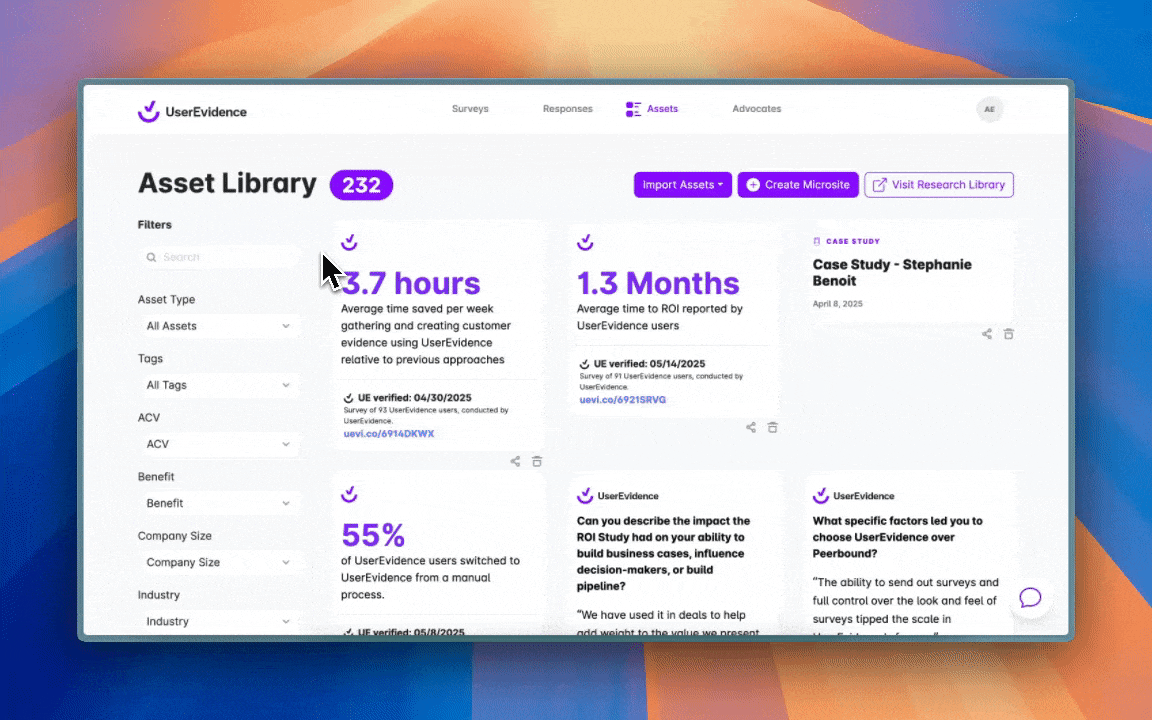
A dream.
Not only did I share a testimonial as a part of the launch but the entire microsite for public perusing.
It was basically me saying: “Not convinced by one quote? Here’s a collection of 11 assets including stats from different customers talking about the value of our integration.”
I’m really keen on the possibilities for microsites and similar functionality moving forward. (You can check out the G2 integration microsite here if you want.) This is where a culture of customer evidence builds a tidal wave that saves me dozens of hours and helps me tell the best possible story as a product marketer. All of this was readily available for me without lifting a finger. It completely changed my content creation process.
The compounding power of customer evidence
Customer evidence isn’t just about “getting a quote.” It’s about compounding your storytelling efforts over time. When you collect consistently, you stop creating content one launch at a time—and start building an evergreen library of proof. And when you do need to collect new evidence it makes it painless.
Over time? That library gives you the power to:
- Reinforce your core story with actual results.
- Highlight ROI and usage trends in specific verticals.
- Punch up your competitive messaging with validated wins.
- Maintain consistency—even as features evolve.
That’s what makes customer evidence a product marketer’s cheat code. That’s what has made it my cheat code for launches here.
I’ve gone from chasing stories to curating them. I’ve gone from being happy with any quote to having the right one, and then adding in stats and research on top.
I’ve done all this while somehow saving days of effort at the same time. Like I said before, I had to get used to this new reality. Now that I am, I’m baffled at my previous process.
Stronger stories, stronger messaging, stronger launches
Our goal is to tell compelling stories our buyers relate to. Customer evidence can do the heavy lifting for you. Let your customers do the talking.
But this is just my personal experience. If you’re curious for more check out this microsite to hear from our PMM customers about their take on UserEvidence. And (cow)poke around in our interactive Demo Ranch if you want to take the platform for a spin yourself.
I’m always available to chat launch strategies or take a look at your current customer evidence process. Just hit me up at alex@userevidence.com.

